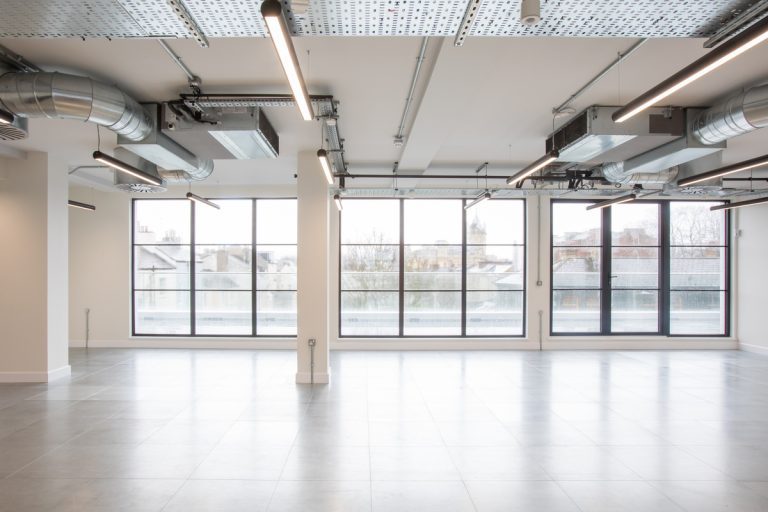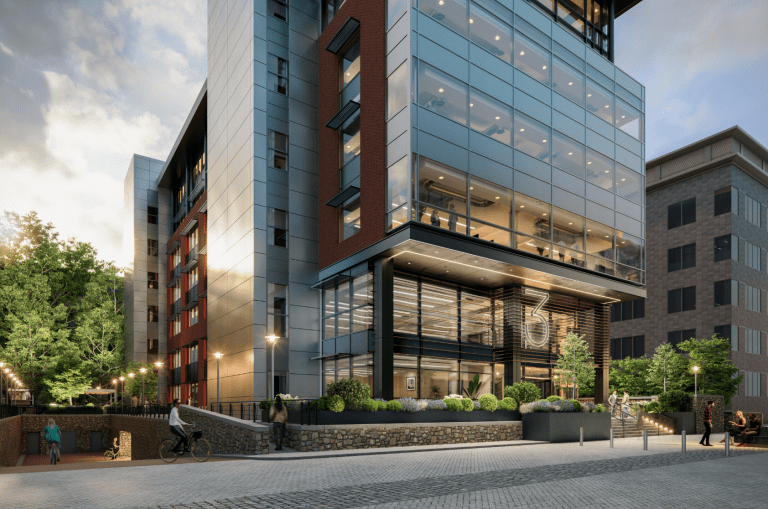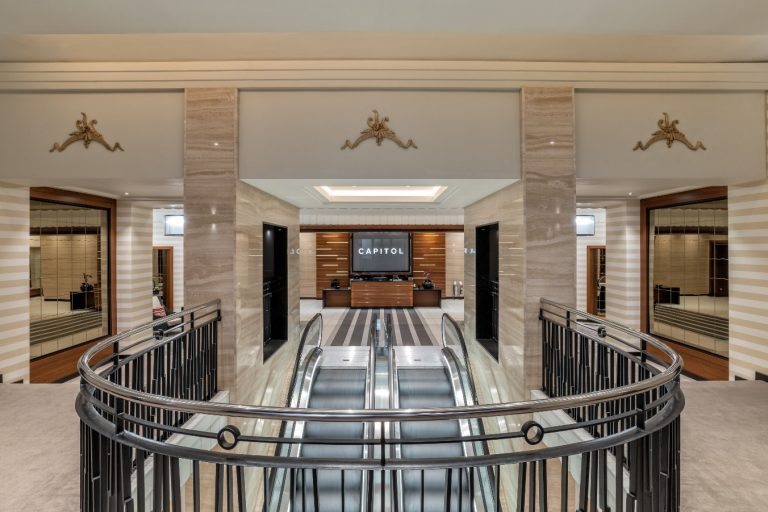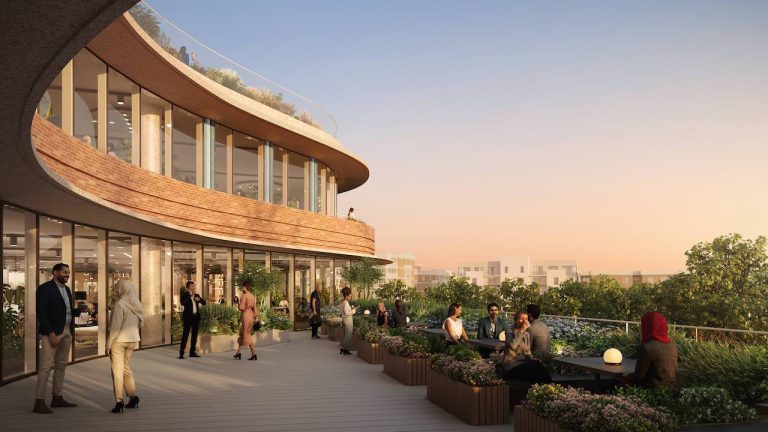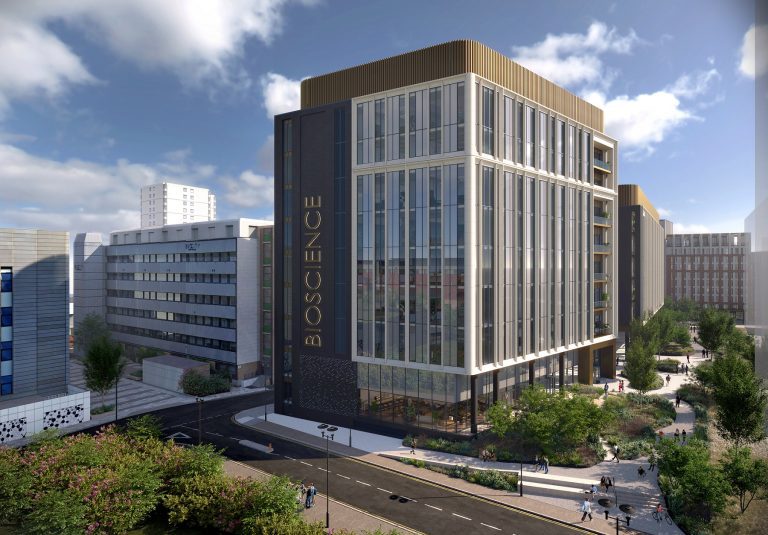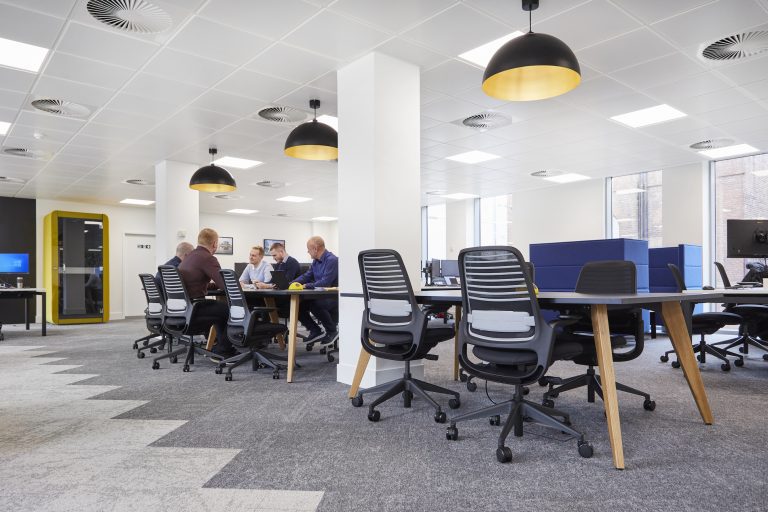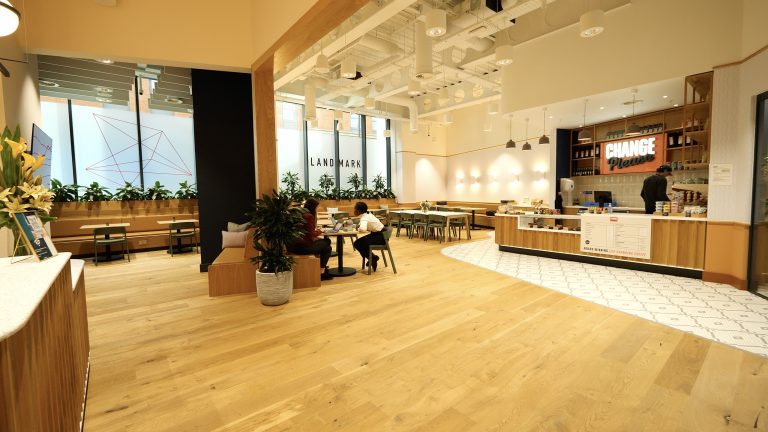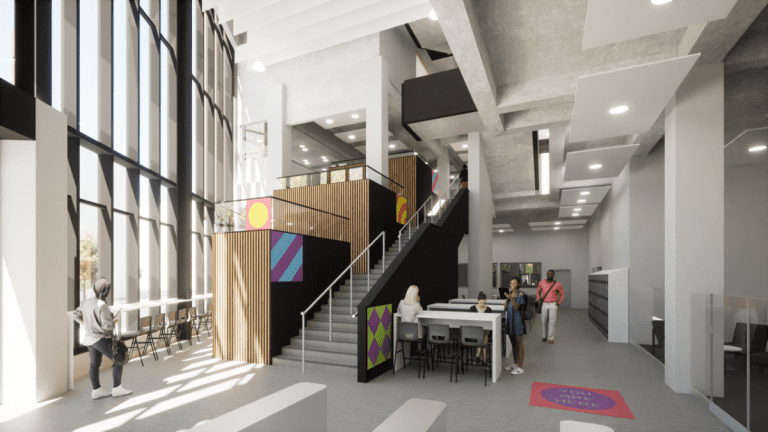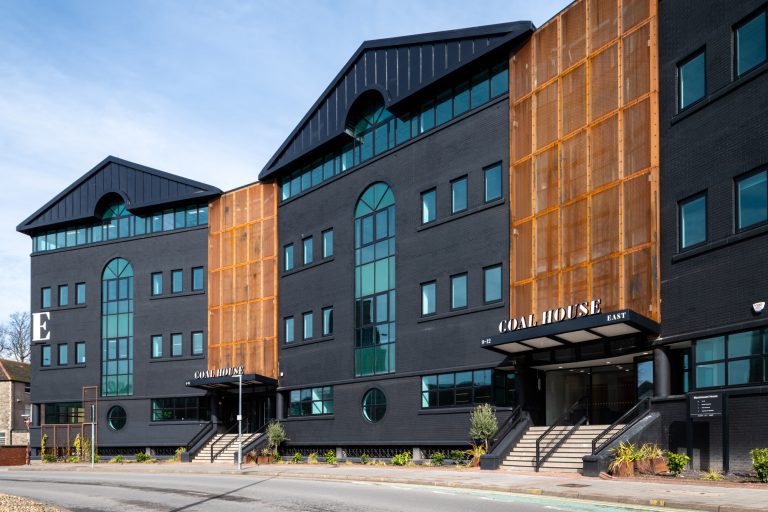Works on Coal House, an ultra-green, next generation office space in Cardiff city centre, have now been completed after a significant redevelopment programme. Thought to now be one of the most sustainable offices in Wales, Coal House, on Dumfries Place, has undergone a huge transformation, resulting in a cutting-edge 30,000 sq ft office building that is net zero carbon in operation[1], stylishly designed and promotes health, wellbeing and productivity. Formerly known as Dumfries House, Coal House has been redeveloped by investor and developer Create, which is currently in talks with several potential tenants about taking space in part of the building. Coal House is 100% powered by renewable energy, partly by its own solar panels, with an energy-efficient heating, ventilation and comfort cooling system, as well as LED lighting, to keep energy use to a minimum. Smart building technology, including a network of intelligent sensors, monitors and manages air quality, energy consumption, temperature and occupancy of the spaces, helping to save energy and cost. Tenants can access the real-time data through the bespoke CoalHouse.Life app, enabling cost efficiency and accurate ESG[2] reporting. A zero-to-landfill waste management system and low-flow water appliances are also in place. With spaces for both creative collaboration and quiet contemplation, Coal House is home to the Atrium Lounge and speciality coffee and juice bar, the Coffee Bar, with a proportion of profits made from drink sales donated to a local charity chosen by the Coal House tenants. A calendar of events curated by the Coal House team and space for businesses to hold their own events will pave the way for an inclusive community feel by creating opportunities to socialise and forge new connections. Other features of the Coal House app include breakfast and lunch deliveries to your office as well as meeting catering – all provided by Cardiff-based The Tidy Kitchen Co, which provides quality convenience and luxury healthy food. The app also offers a visitor management system, as well as access to services that can be arranged by the concierge team, such as dry cleaning, cycle repair and car valeting. Local discounts and offers, including for a nearby nursery, coffee shops and bike servicing, are also available for tenants via the app. Careful attention has been paid to create an industrial-chic aesthetic within the space by award-winning design agency Run for The Hills. The shared spaces draw on a biophilic design approach, which brings the beauty and calm of the outdoors inside. Plenty of plants and natural materials, such as sustainable bamboo, eco-engineered timber and recycled weave flooring, aim to boost residents’ creativity, productivity and well-being. Ricky Humphreys, director of Create, said: “We are delighted to have given a new lease of life to this once dated city centre office building, creating a highly sustainable, future-fit workplace that will provide an inspiring and attractive working environment with plenty of perks for businesses and staff. We set out to achieve an optimal balance between retaining the embodied carbon in the existing building and keeping energy consumption to a minimum, in line with our goal to make Coal House somewhere environmentally conscious businesses would feel proud to be based.” Coal House is equipped with eight electric vehicle charging points and grab-and-go community bikes for use by the on-site community. There is generous secure cycle storage and car parking, showers and changing facilities, as well as a DIY bike maintenance station where bike users and visiting technicians can carry out repairs and servicing. Coal House is just five minutes on foot from Cardiff Queen Street and a short walk to Cardiff Central. Kieran Crowe, director and head of net zero buildings at the Low Carbon Alliance, which acted as a consultant on Coal House, said: “Coal House has showcased the ability to achieve net zero in operational status and an impressive EPC ‘A’ rating through retrofit, by utilising standard fit-out practices alongside technology. “The building self-generates most of its power needs through rooftop PV and does not utilise any fossil fuels. I hope other developers and property funds can take inspiration from this building and understand that great outcomes for the environment are possible and commercially viable. As members and partner of UKGBC’s Advancing Net Zero programme, we have taken Coal House forward as a leading example of retrofit for net zero.” There is between 3,000 – 30,000 sq ft of high quality space available to let immediately at Coal House, aimed at companies who want to take a conventional lease but with the added amenities not typically provided in many office buildings. The space, which has disabled access, has superfast plug and play fibre connectivity and can be fitted out according to tenants’ requirements, and even provided on a fully serviced basis. The building has achieved Wired Score Platinum, SKA Gold and AirRated Platinum, as well as targeting Fitwell two stars and BREEAM Excellent. Coal House is marketed for let by Savills and Knight Frank in Cardiff. Interested businesses should contact Gary Carver at Savills via gcarver@savills.com or by calling 07972 000 171, or Mark Sutton at Knight Frank via mark.sutton@knightfrank.com or by calling 07919 395 593. Visit https://www.coalhouse.co.uk/ to find out more. [1] The redevelopment of Coal House has been aligned to the definition of Net Zero Carbon published by UKGBC. Coal House has to date achieved an EPC A rating, which verifies the building is highly efficient. [2] Environmental, Social & Governance (ESG) Building, Design & Construction Magazine | The Choice of Industry Professionals
